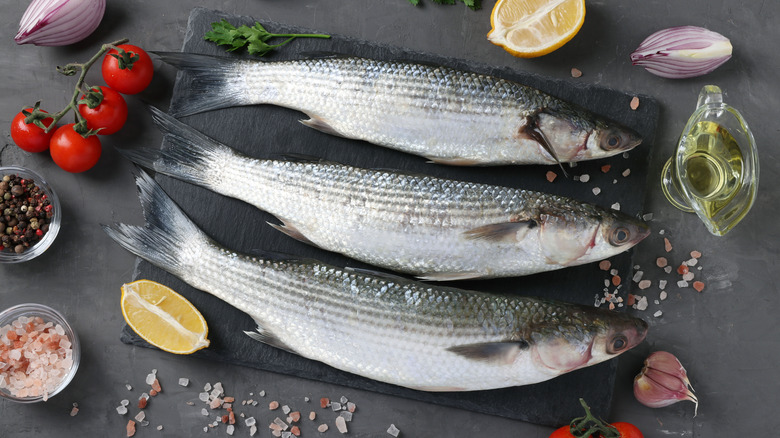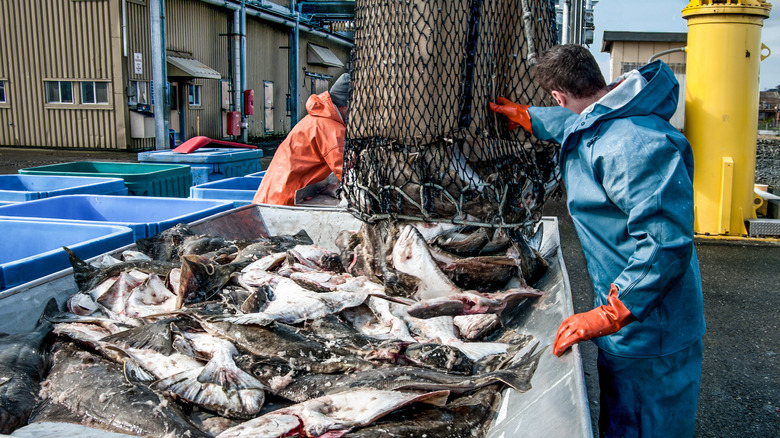Seafood Is About To Get Even More Expensive. Here's Why
In the face of already unprecedented grocery prices, the price of your favorite fresh and frozen seafood products is likely to soar even higher thanks to a new round of trade sanctions.
According to AP News, new U.S. sanctions levied against Russia over its ongoing invasion of Ukraine are guaranteed to disrupt the global seafood industry in a major way. The sanctions, which include a blanket ban on imports of seafood from Russia, will have a huge impact on the supply chain, driving up the price of fish, shellfish, and other seafood products across the country and the world.
The United States particularly relies on Russian exports for supplies of fresh cod, crab, and Alaska pollack. In a two-year span from 2020 to 2022, the U.S. imported more than 28 million pounds of cod from Russia. In recent years, the U.S. has been particularly dependent on Russia for the import of this white fish after the nation's own Atlantic cod industry crumbled due to environmental issues and overfishing.
Outside of the U.S., the United Kingdom and European Union are also steeling themselves for a sharp decline in the fish supply, despite holding off on putting their own sanctions in place against the Russian seafood industry (via IntraFish). In the U.K., The National Federation of Fish Friers (which represents the nation's thriving fish and chip industry) warned that nearly half of the country's 10,500 fish and chips providers could shut down due to the Western sanctions (via South China Morning Post).
Russia is one of the largest exporters of fresh fish in the world
Beyond the U.S. and Europe, the latest round of sanctions against Russia are likely to be felt around the globe, as Russia is one of the main producers of fresh seafood in the world (via AP News). In recent years, Russia's dominance of the global seafood trade has continued to expand. In 2021, the nation's seafood exports rose by 26% (a $5.85 billion value), despite global fish shortages (via National Fisherman).
Recently, Russian fishermen have produced over four million metric tons of wild-caught fish, including huge amounts of herring, pollack, cod, and salmon. Russia's ability to catch such staggering amounts of wild fish are partly owed to the large, sparsely populated stretches of coastal land across the country, which allow marine life to thrive.
In addition to driving up the price of fresh seafood, the Russian sanctions could also lead to the loss of American jobs. U.S.-based seafood processors will likely be hit hard by the import ban, which has the potential to lead to the elimination of large swaths of processing jobs (via AP).
With no end in sight to the Russian invasion of Ukraine, seafood producers and consumers in the U.S. and beyond will have to pivot their focus away from imported fishes, like cod, and embrace more widely available domestic species, like haddock, Atlantic pollock, or monkfish for our fried fish sandwiches, ceviches, and more.

